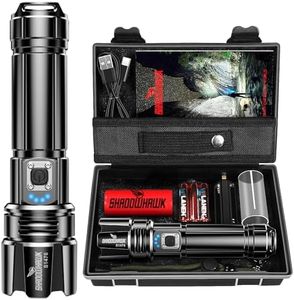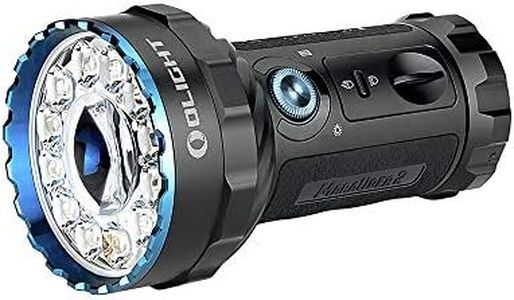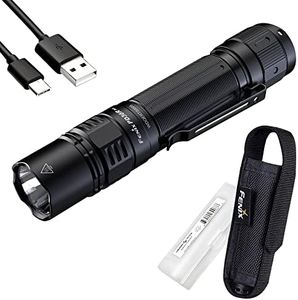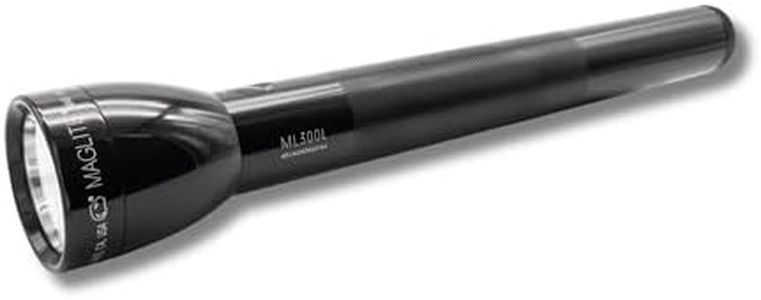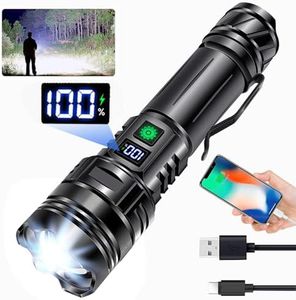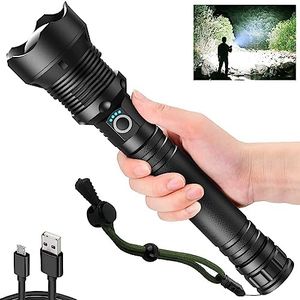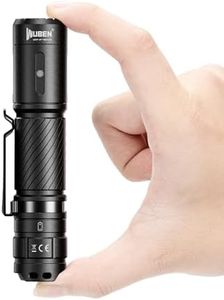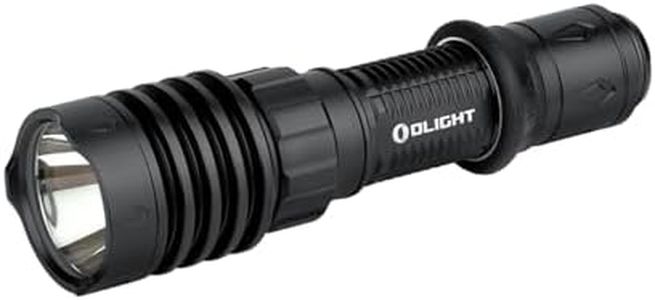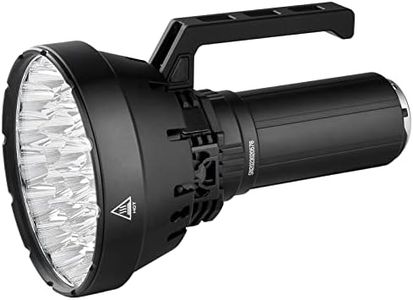We Use CookiesWe use cookies to enhance the security, performance,
functionality and for analytical and promotional activities. By continuing to browse this site you
are agreeing to our privacy policy
10 Best High Lumen Flashlights
From leading brands and best sellers available on the web.Buying Guide for the Best High Lumen Flashlights
Choosing the right high-lumen flashlight can make a major difference in everyday tasks, outdoor adventures, or emergencies. With many models available, it's essential to understand what separates a great flashlight from an average one. By knowing the main features, you can match the flashlight's performance to your needs, whether that's for camping, working in dark spaces, security, or around-the-house use. Focus on what fits your lifestyle, and you'll find a reliable light that serves you well.Lumen OutputLumen output measures how much total visible light the flashlight produces. More lumens mean a brighter beam. Flashlights can range from below 100 lumens (suitable for basic household needs) to several thousand lumens (for search and rescue, or exploring dark outdoor areas). If you mainly use your flashlight around the house, you might be satisfied with lower lumens. For outdoor activities like hiking or camping, moderate to high lumens give better visibility. Choose ultra-high lumens for professional or extreme use, but consider that higher output usually means faster battery drain and potential for more heat.
Beam DistanceBeam distance tells you how far the flashlight can project useful light. It's important if you need to see things at a distance, like navigating trails at night or scanning a backyard. Short-range beams (up to 50 meters) work for close-up tasks; mid-range (around 100–200 meters) are good for general outdoor use; long-range beams (over 200 meters) are suited for search, rescue, or tactical situations. Consider how far you typically need to see and match the beam distance to those situations.
Battery Type and LifeBattery type affects flashlight convenience and cost. Some use disposable batteries (like AA or AAA), while others use rechargeable lithium-ion cells. Battery life is crucial—higher lumen settings drain energy faster. If you need a flashlight for emergencies or lengthy activities without easy charging, look for long runtime or models with swappable batteries. For frequent use, rechargeable options save money and are more eco-friendly. Match your choice to how often and how long you'll use the light.
Durability and Water ResistanceDurability covers the flashlight's resistance to drops and rough use, while water resistance (often shown as an IPX rating) tells you how well it handles splashes or submersion. For basic indoor use, high durability may not be necessary, but for camping, work sites, or emergency kits, ruggedness and good water resistance protect your investment. IPX4 means splash-proof, while IPX7 or IPX8 means it can survive immersion in water. Think about where you'll use your flashlight and choose a sturdier and more water-resistant model for harsher environments.
Size and WeightThe size and weight of a flashlight affect how portable and comfortable it is to use. Small, lightweight models are easy to carry in a pocket or bag and are best for everyday carry. Larger, heavier flashlights often offer more power or longer battery life but can be bulky. Decide whether compactness or performance is more important for your primary use—if you want something for emergencies at home, size might not matter, but for hiking or daily carry, lightweight options are preferred.
Modes and ControlsMany high-lumen flashlights offer multiple modes such as low, medium, high, turbo, strobe, or SOS. These let you adjust brightness and save battery when full power isn't needed. Some have simple one-button controls, while others offer more complex interfaces. If you want versatility, look for more modes; for ease of use, simpler controls are better. Think about whether you need features like flashing for signaling, or just straightforward lighting.


